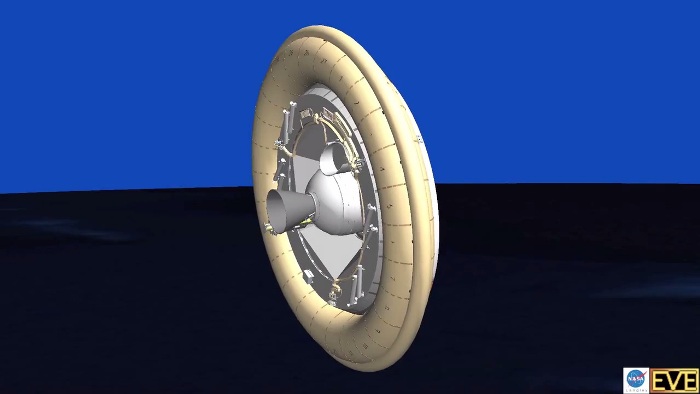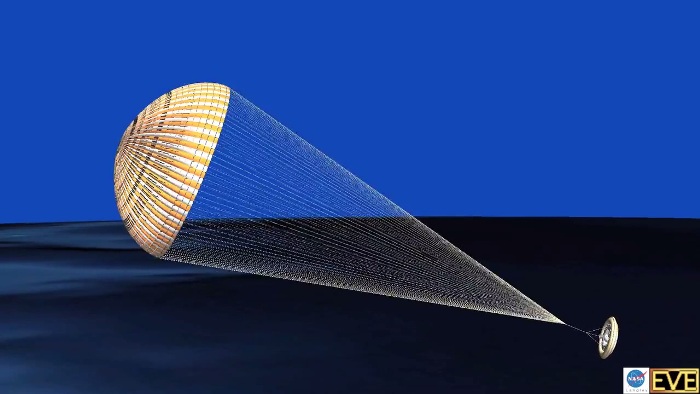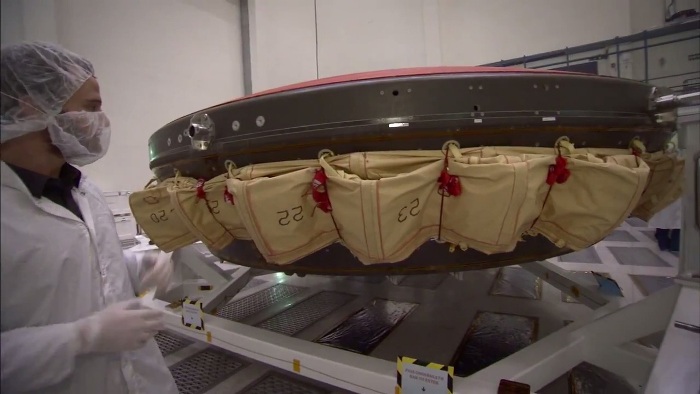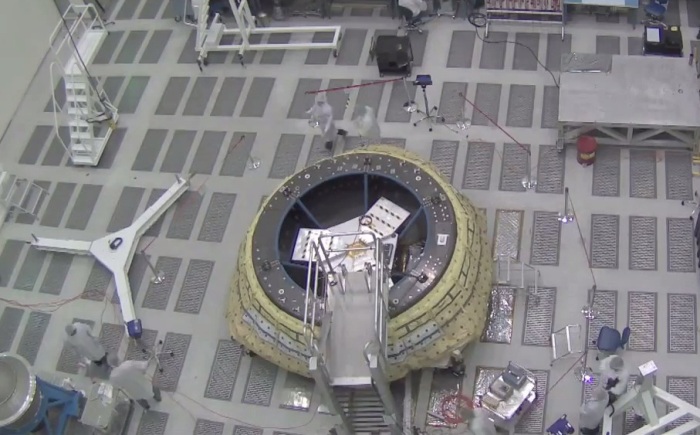NASA’s New ‘Flying Saucer’ Tech Is Meant for Landing, Not for Flying

Screenshot from the promotional video released by the Jet Propulsion Laboratory – California Institute of Technology
Launching a vehicle to space for planetary exploration is not easy. Similarly, trying to land this vehicle on the surface of another planet is not going to be easy. That’s why NASA has been working on concepts and solutions to make it possible to land vehicles on the surface of another planet without getting damaged and in a very efficient manner.
In an article we published a couple of months ago, we reported NASA’s attempt in developing blanket-like “flat landers” that can be used to facilitate the landing of vehicles on other planets. This time, NASA is exploring the idea of using a flying saucer or a disc-shaped vehicle that comes with a gigantic parachute.
NASA’s Flying Saucer
The flying saucer vehicle is called Low-Density Supersonic Decelerator (LDSD) . It has two saucer-like components dubbed as Supersonic Inflatable Aerodynamic Decelerators or SIADs. One of the SIADs measures 20 feet or 6 meters in diameter while the other has a diameter of 26 feet or 8 meters. These SIADs are designed to fit around the rim of atmospheric entry vehicles. Obviously, the role of the SIADs, as the name implies, is to facilitate deceleration as the vehicle descends. The two saucer-like components increase drag to slow down or decelerate the rapid descension of the atmospheric entry vehicle.
LDSD also comes with a 100-foot wide parachute that is supposed to be opened once the rapidly descending vehicle slows down to Mach 2.5. This gigantic chute is hailed as the biggest supersonic ever flown.

Screenshot from the promotional video released by the Jet Propulsion Laboratory – California Institute of Technology
The Test
The flying vehicle was launched off the Hawaiian island of Kauai on June 28. It was supposed to have been tested earlier but the weather (high winds) was deemed unfavorable so NASA had to delay it six times, for around two weeks. To proceed with the test, LDSD was lifted by a helium balloon to reach the highest altitude the helium balloon could achieve before engaging the vehicle’s rocket thrusters. The vehicle reached an altitude of 34 miles or 55 kilometers over the Pacific Ocean after exhausting its rocket launchers.
A huge 7,000-lb helium balloon was used to raise the “flying saucer” most probably because NASA wanted to keep the weight of the vehicle at a certain level. LDSD or the flying saucer is designed for landing so they may have not wanted to significantly change its design and weight by attaching bigger or higher capacity rockets to it. Doing it that way would also be less costly.
LDSD was able to successfully deploy its inflatable saucers as it descended. However, the giant parachute failed to unfurl correctly. This made the vehicle splash into the Pacific Ocean. The parachute was expected to have slowly and safely brought the vehicle to the water’s surface.

Screenshot from the promotional video released by the Jet Propulsion Laboratory – California Institute of Technology
Goal of the LDSD Test
As mentioned, this flying saucer test is meant to explore a new option for landing vehicles or equipment to another planet with a thin atmosphere. It aims to upgrade the decades-old landing technology being used by NASA. Since the 1970’s, NASA has been relying on the same parachute design and landing system used to slow down landers and rovers as they descend into the surface of alien planets. Hopefully, with this new technology, it will become more efficient and safer to land heavier equipment, bigger spacecraft, and astronauts on Martian soil or on the surface of other planets.
Test Cost
As short and slightly disappointing as it was, the project cost around $150 million. This is the sum of the costs involved in developing the new technology and the cost of the actual test flight and landing itself. The succeeding related project, scheduled for the summer of 2015, will be getting $200 million in funding.
Not the Flying Saucer You Are Thinking
NASA’s flying saucer is probably unlike what you have in mind. It does not levitate and fly steadily on its own. It does not spin rapidly to fly. It does not produce that weird “alien sound.” LDSD is basically just a disc-shaped vehicle that is created with such a design for aerodynamics. Until now, NASA and other space agencies in other parts of the world still haven’t figured out how to make flying saucers work in the way they do in sci-fi movies.

Deflated LDSD – Screenshot from the promotional video released by the Jet Propulsion Laboratory – California Institute of Technology

Inflated LDSD – Screenshot from the promotional video released by the Jet Propulsion Laboratory – California Institute of Technology
Despite the failure of the giant chute to open properly and the splashing of the vehicle into the Pacific Ocean, the LDSD test is still considered as a success by NASA. Dan Coatta, a NASA engineer at the Jet Propulsion Laboratory in Pasadena, claims that it was “a really good test.” “This is an opportunity for us to take a look at the data, learn what happened and apply that to the next test,” Coatta adds.